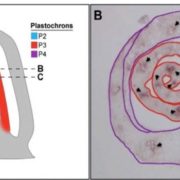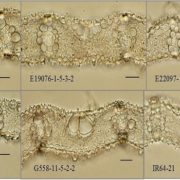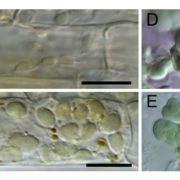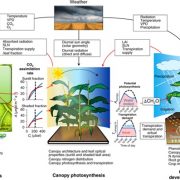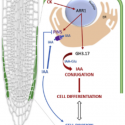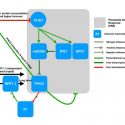A direct connection between PSI & PSII systems in green plants (Plant Cell Physiol)
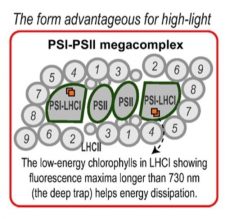 Plants often optimize their development according to the prevailing environmental conditions, of which light is one of the most important. Arabidopsis uses a PSI-PSII megacomplex as the photosystem reaction center, to transfer the excessive energy from PSII to PSI rapidly. Recently, Yokono et al. proposed that sun-plants may accumulate more PSI-PSII megacomplex than shade-plants to increase high-light tolerance. They developed an electron microscopy technique and analyzed chlorophyII fluorescence in representatives from across the green plants, from Streptophyta to Chlorophyta, and found the structure of this megacomplex, which contains one PSII dimer directly sandwiched between two PSIs, enables plants to dissipate excessive energy via deep trap in PSI. This study sheds light on the mechanism of how green plants survive under strong light conditions, and also suggests an ancient and conserved photosystem because this PSI-PSII megacomplex is their common feature of all green plants. (Summary by Nanxun Qin) Plant Cell Physiol. 10.1093/pcp/pcz026
Plants often optimize their development according to the prevailing environmental conditions, of which light is one of the most important. Arabidopsis uses a PSI-PSII megacomplex as the photosystem reaction center, to transfer the excessive energy from PSII to PSI rapidly. Recently, Yokono et al. proposed that sun-plants may accumulate more PSI-PSII megacomplex than shade-plants to increase high-light tolerance. They developed an electron microscopy technique and analyzed chlorophyII fluorescence in representatives from across the green plants, from Streptophyta to Chlorophyta, and found the structure of this megacomplex, which contains one PSII dimer directly sandwiched between two PSIs, enables plants to dissipate excessive energy via deep trap in PSI. This study sheds light on the mechanism of how green plants survive under strong light conditions, and also suggests an ancient and conserved photosystem because this PSI-PSII megacomplex is their common feature of all green plants. (Summary by Nanxun Qin) Plant Cell Physiol. 10.1093/pcp/pcz026


